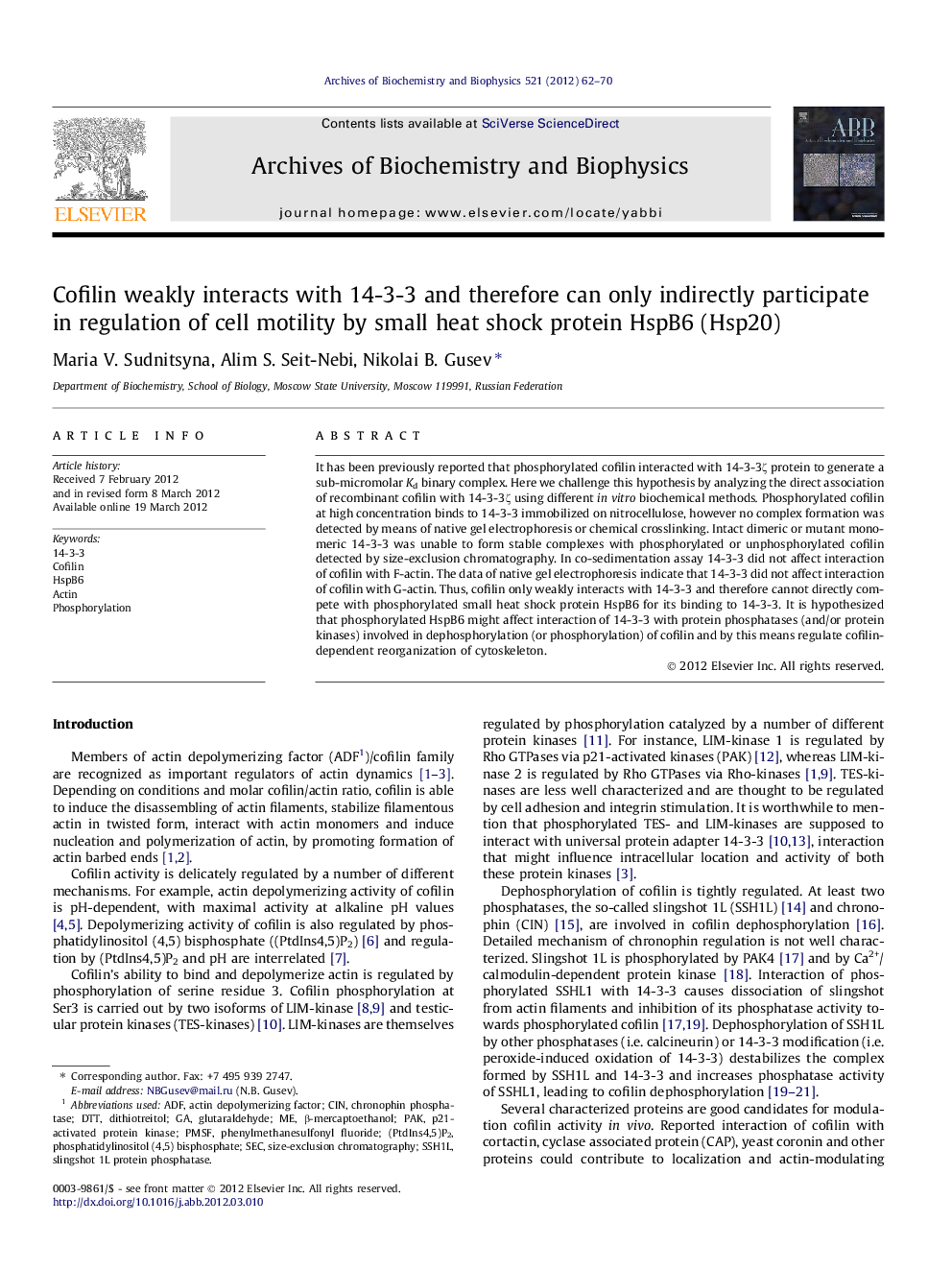| Article ID | Journal | Published Year | Pages | File Type |
|---|---|---|---|---|
| 1925569 | Archives of Biochemistry and Biophysics | 2012 | 9 Pages |
It has been previously reported that phosphorylated cofilin interacted with 14-3-3ζ protein to generate a sub-micromolar Kd binary complex. Here we challenge this hypothesis by analyzing the direct association of recombinant cofilin with 14-3-3ζ using different in vitro biochemical methods. Phosphorylated cofilin at high concentration binds to 14-3-3 immobilized on nitrocellulose, however no complex formation was detected by means of native gel electrophoresis or chemical crosslinking. Intact dimeric or mutant monomeric 14-3-3 was unable to form stable complexes with phosphorylated or unphosphorylated cofilin detected by size-exclusion chromatography. In co-sedimentation assay 14-3-3 did not affect interaction of cofilin with F-actin. The data of native gel electrophoresis indicate that 14-3-3 did not affect interaction of cofilin with G-actin. Thus, cofilin only weakly interacts with 14-3-3 and therefore cannot directly compete with phosphorylated small heat shock protein HspB6 for its binding to 14-3-3. It is hypothesized that phosphorylated HspB6 might affect interaction of 14-3-3 with protein phosphatases (and/or protein kinases) involved in dephosphorylation (or phosphorylation) of cofilin and by this means regulate cofilin-dependent reorganization of cytoskeleton.
Graphical abstractFigure optionsDownload full-size imageDownload high-quality image (61 K)Download as PowerPoint slideHighlights► Phosphorylated cofilin interacted with 14-3-3 bound to nitrocellulose. ► Native electrophoresis and crosslinking failed to detect cofilin-14-3-3 complex. ► Cofilin did not interact either with dimeric or monomeric 14-3-3. ► 14-3-3 did not affect interaction of cofilin with either G- or F-actin. ► Cofilin cannot compete with phosphorylated HspB6 for 14-3-3 binding.
